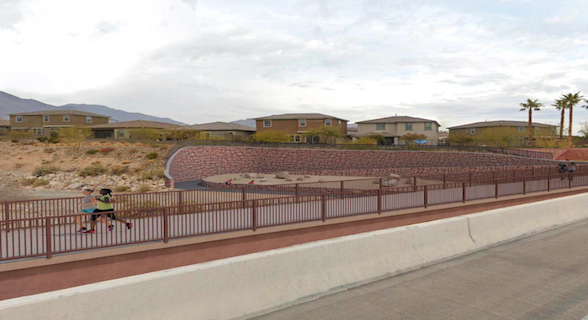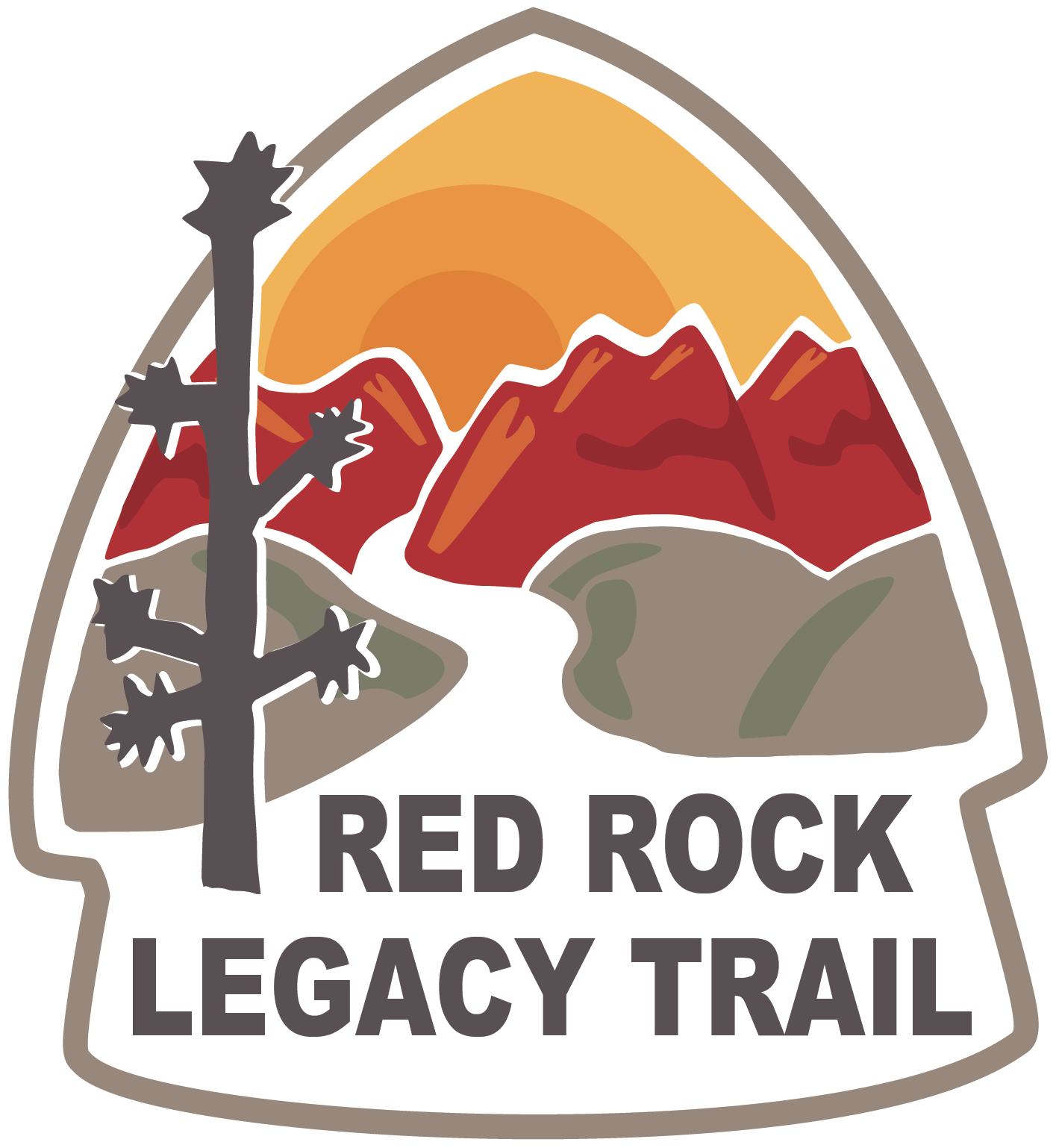
near the trailhead for the $100-million Red Rock Legacy Trail.
Image courtesy of Jacobs Engineering
By Doug Puppel
Construction is set to start next year on a planned $100-million bike and hiking trail from Las Vegas’ western suburbs to scenic Red Rock Canyon.
The long-discussed 20-mile Red Rock Legacy Trail will run alongside Nevada State Route 159, a busy thoroughfare that’s currently shared by motorists and bicyclists.
“Many cyclists don’t feel comfortable riding alongside the roadway,” says Clark County Commissioner Justin Jones, an avid bicyclist whose district includes the trail route. “Once we make it a thing people feel safe doing, they are more likely to get out there.”
An environmental comment period is expected to start this month on the planned Federal Highway Administration project, which will travel mostly through the federally protected Red Rock Canyon National Conservation Area.
The project is designed to be built in phases, with the first phase extending five miles from residential neighborhoods at the north end of the trail to near the entrance of the popular scenic drive through the interior of the canyon. That $14.7-million section would be followed by another one starting at the trail’s southern end.
Design work for the first section is expected to be complete in about a year, according to a statement from the Federal Highway Administration, with construction starting a few months later. Design work for the southern section is about 30% complete, with its environmental comment period to be held late this year, according to the statement.
Additional phases will connect the end sections, creating a trail that will run through the Bureau of Land Management-administered conservation area, which attracts nearly four million visitors a year.
Clark County will build parking areas at both ends of the trail and be responsible for its maintenance once it’s complete. In late 2023, a pedestrian bridge will be constructed adjacent to an existing bridge near the north end of the trail, and a crossing under the existing bridge will provide access to the parking lot on the other side of the highway.
“The most difficult piece is going to be the connection between the parking lot to the trail,” says Jones, a vocal advocate for the project.
The two initial phases are being funded through a grant from the Federal Lands Access Program with a matching component from Clark County. The other phases will be paid for using Southern Nevada Public Land Management Act funds.
Contractors will be selected after design work is completed.
